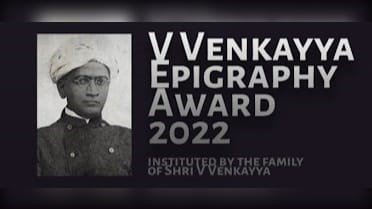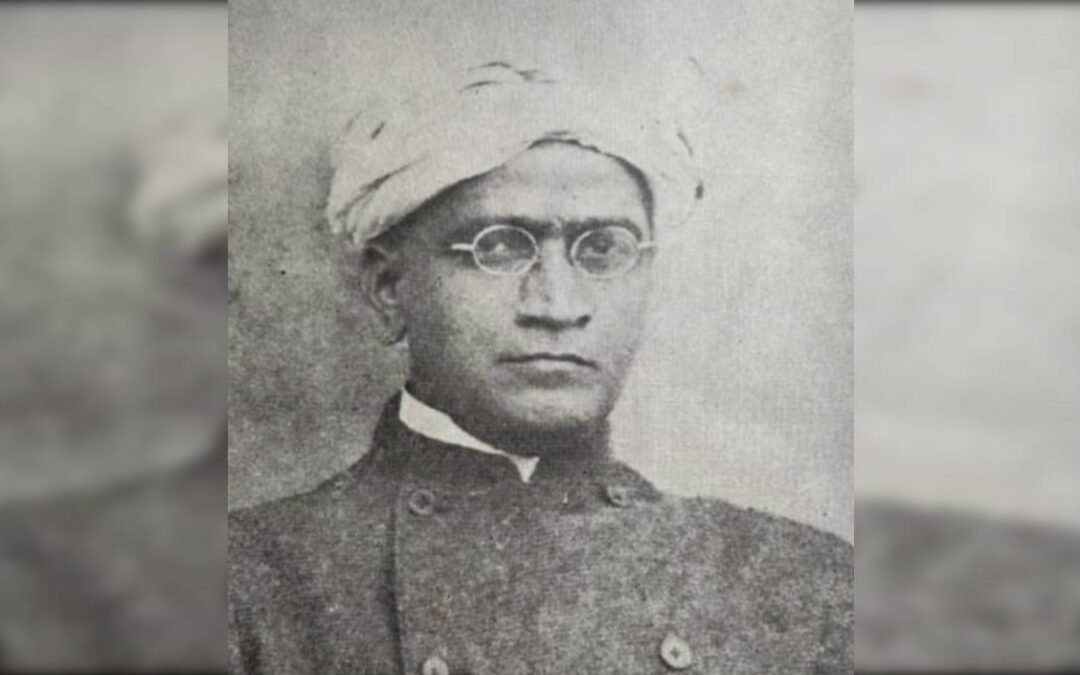Read in : தமிழ்
When V. Venkayya was a science teacher at a high school in Kancheepuram, he would often visit the Kailasanathar temple, built by the Pallava king Narasimhavarman (II). Attracted by the Pallava architecture, he soon extended his journey to the famous shore temples of Mamallapuram, the ancient port town of the Pallavas, 68 km from Kancheepuram. It was on one such visit that Venkayya met German indologist Eugen Hultzsch at the shore temple in 1886. The meeting was a turning point, both for Venkayya and the cultural history of Tamil Nadu.
Hultzsch (1857-1927) asked Venkayya what he was doing, to which he said, “I am a Physics graduate and I work as a science teacher at a high school in Kancheepuram.” Seeing a passionate Venkayya looking at the Pallava Grantha inscriptions inside the shore temple, Hultzsch told him, “This is the right place for you.” Hultzsch, who was the chief epigraphist of the Madras Presidency, soon wrote to officials that he wanted Venkayya as his assistant. The British government agreed and the young Venkayya started work with Hultzsch.
Travelling to Mamallapuram was not easy then. One had to either take a country boat along the Buckingham Canal or use a bullock cart. Venkayya started taking estampages of the Pallava and Chola inscriptions in the shore temples of the ancient port town. French archaeologist G. Jouveau-Dubreuil said the inscription “Atyantakama Pallavesvara’ was first discovered by Venkayya.
In a research paper presented to the Archaeological Society of South India in 1962, renowned epigraphist R.Nagaswamy explained what ‘Atyantakama’ meant. “This temple was built by Narasimhavarman (II), who had the coronation name of Rajasimha, while he had another name, ‘Atyanta Kama’, which he was fond of using in all the temples he built.” Even though Venkayya and Hultzsch travelled to temples (in search of inscriptions) together, it was Venkayya who could enter the temple most of the time. Being a foreigner, Hultzsch was denied entry to many temples. He would wait outside for Venkayya to bring the estampages of inscriptions.
Venkayya met German indologist Eugen Hultzsch at the shore temple in 1886. The meeting was a turning point, both for Venkayya and the cultural history of Tamil Nadu.
Also Read:
Kashmir and Tamil Nadu, an ancient link
Sangam-era temple unveiled by tsunami remains a mystery
Sanskrit scholar
Although Venkayya studied Physics, he was a great scholar in Sanskrit, another reason why Hultzsch chose him. The late Nagaswamy once said that it was the hard work of Hultzsch and Venkayya in deciphering the lithic inscriptions in Mamallapuram that helped us know the exact history of the port town. The publication of “South Indian Inscriptions (Volume I, 1890)”, edited by Eugen Hultzsch, was the first result of the Hultzsch-Venkayya collaboration.
Impressed by Venkayya’s passion and devotion, Hultzsch credited it to him. “For the Tamil inscriptions, I was fortunate enough to have an able and efficient helpmate in my assistant, Mr. V. Venkayya, who promises to do excellent work in the field of south-Indian epigraphy…. It is to be hoped that other young native graduates will follow on Mr Venkayya’s lines and take up the neglected subject of South-Indian epigraphy,” he wrote in the preface to the volume.
The British government honoured him with “Rai Bahadur” (a title of honour) for his significant service to epigraphy and history in 1906. In 1908, he became chief epigraphist of the government of India. He died in 1912.
The transformation from science teacher to epigraphist was fast, thanks to Hultzsch placing Venkayya on the right track. His effort in deciphering hundreds of lithic and copper-plate inscriptions of Pallavas, Cholas, Pandyas and others helped many epigraphists and historians rewrite the history of south India. Venkayya’s discovery of the 2nd Century AD Mangulam Tamil Brahmi inscriptions, the Uthiramerur inscriptions of the Parantaka Chola- I (AD 907-955), and the inscriptions in the Brihadeeswarar temple in Thanjavur stand testimony to his mastery of epigraphy. For example, it was after Venkayya deciphered the inscriptions in Uthiramerur that a democratic mode of election using pot-tickets which had existed more than 1,000 years ago in Tamil Nadu became known.
Teacher to chief epigraphist
Born in 1864 in a Valaiyattur village near Arni, Venkayya learnt Sanskrit when he was a child. His father Sri Arani Appa Sitaramayya was keen on his education. After schooling, he was sent to Madras for higher studies. For Venkayya, a journey from a science teacher to the first Indian chief epigraphist of the Government of India was eventful. In 1903, he was appointed epigraphist of the then Madras Presidency. The British government honoured him with “Rai Bahadur” (a title of honour) for his significant service to epigraphy and history in 1906. In 1908, he became chief epigraphist of the government of India. He died in 1912.

A couple of years ago, Venkayya’s great granddaughter Sunitha Madhavan published his biography. The “Life and Works of Rai Bahadur V. Venkayya” talks about his contributions to history in a 48-year life. Now, in association with the Tamil Heritage Trust (THT), she wants to institute an award in the name of her great grandfather. “The V Venkayya Epigraphy Award (VVE Award) aims to recognise exceptional individual contributions towards the discovery of unrecorded inscriptions (in any Indian language), interpretation of inscriptions from a refreshingly new perspective, dissemination of knowledge contained in them by conventional as well as digital medium and preservation of epigraphic resources for posterity,” said a release from the Tamil Heritage Trust.
The Award is based on a nomination and selection process. It consists of a citation and a prize of Rs 20,000. A jury comprising experts from epigraphy, history, and heritage and members of the THT award committee will select the winner. Nominations for the VVE Award should be sent by email to awards.tht@gmail.com. The last date for nominations to reach THT is June 26, 2022. Log on to http://www.tamilheritage.in for more information.
Read in : தமிழ்











